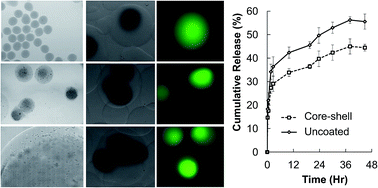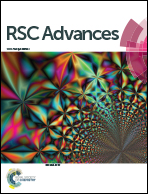Electrospray-mediated preparation of compositionally homogeneous core–shell hydrogel microspheres for sustained drug release
Abstract
Incorporating hydrogel particles with the core–shell architecture is a promising route to fabricate colloidal “smart gels” with tuneable properties. This study reports a facile electrospray-based method to generate compositionally homogeneous core–shell hydrogel microspheres. By manipulating different process parameters (e.g., electric field strength, flow rate, and gel-forming polymer concentration), the size of the microspheres can be tuned from microns to millimetres. Drug release studies demonstrate that coating the surface of the hydrogel microsphere with a hydrogel layer remarkably prolongs the drug release sustainability. In 3T3 and HEK293 cells, both the acute and delayed toxicity caused by the hydrogel microspheres are shown to be negligible. Together with the ease of operation of the production method, the compositionally homogeneous core–shell microspheres generated by our method may enhance the versatility and flexibility in future drug delivery.



 Please wait while we load your content...
Please wait while we load your content...